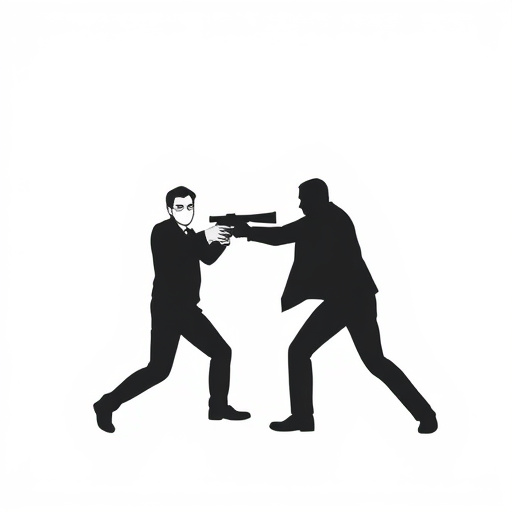Even though unopened pepper spray can last up to 5 years, opened cans have a shelf life of 2-3 years due to air and moisture exposure. Proper storage in cool, dry places away from sunlight is key to preserving potency. Regular usage within a year of opening ensures optimal performance for crowd control or self-defense, as expiration dates and product information should be checked before use.
“In recent years, pepper spray has emerged as a prevalent crowd control measure used by law enforcement worldwide. As its effectiveness in de-escalating situations is well-documented, understanding its proper utilization and storage is paramount for both professionals and consumers alike. This article delves into the intricacies of pepper spray, focusing on its active ingredient, shelf life post-opening, potency factors, best practices, and safety precautions, highlighting critical aspects to consider regarding pepper spray shelf life after opening.”
- Understanding Pepper Spray's Active Ingredient
- Shelf Life Considerations After Opening
- Factors Affecting Pepper Spray Potency
- Best Practices for Storage and Usage
- Safety Precautions and Potential Side Effects
Understanding Pepper Spray's Active Ingredient
Pepper spray, a common crowd control tool used by law enforcement, contains capsaicin, the active ingredient responsible for its effectiveness. Capsaicin is derived from chili peppers and, in concentrated forms, can cause temporary yet intense discomfort. When deployed, it irritates the eyes, nose, throat, and skin, enabling police to control and disperse crowds quickly.
Understanding pepper spray’s composition, including its shelf life after opening, is essential for both users and bystanders. While unopened pepper sprays typically have a long shelf life, usually several years, opened containers are subject to degradation due to exposure to air and moisture. After opening, pepper spray generally remains effective for up to 2–3 years, but proper storage conditions are crucial to maintain its potency.
Shelf Life Considerations After Opening
After opening a canister of pepper spray, it’s crucial to understand its shelf life. While unopened, pepper spray can typically remain effective for up to 5 years. However, once exposed to air, the chemical composition starts to deteriorate. Pepper spray manufacturers usually provide an expiration date, which is an indicator of optimal performance.
After opening, store the canister in a cool, dry place away from direct sunlight. Despite common belief, pepper spray does not have an indefinite shelf life after opening; it gradually loses potency over time. Regular checks and usage within a year of opening are recommended to ensure its effectiveness when needed for crowd control or self-defense purposes.
Factors Affecting Pepper Spray Potency
The potency of pepper spray in crowd control is influenced by several factors, beyond its initial manufacturing quality. One key consideration is the pepper spray shelf life after opening. Unlike unopened cans that retain their full strength, once opened, pepper spray begins to degrade over time due to exposure to air and moisture. The effectiveness can be reduced by up to 30% within just a few months if not stored properly.
Proper storage conditions, including temperature and humidity levels, play a significant role in maintaining the spray’s potency. Extreme heat or cold can cause chemical changes in the pepper spray, leading to a loss of capsaicin concentration, the active ingredient responsible for the burning sensation. Additionally, factors like age, manufacturing quality, and the specific formula used can all contribute to variations in performance, making it crucial to check the product information and expiration dates before use.
Best Practices for Storage and Usage
After opening, pepper spray has a limited shelf life of approximately 2-3 years. Proper storage is crucial to maintaining its effectiveness during this period. It should be kept in a cool, dry place away from direct sunlight or heat sources. Many manufacturers recommend storing it in a secure location, out of reach of children and unauthorized individuals.
When using pepper spray for crowd control, it’s essential to follow best practices. This includes ensuring proper training for officers, who should understand the spray’s range, effect, and de-escalation strategies. Regular maintenance checks on equipment and supplies are vital to guarantee their readiness when needed. Additionally, staying up-to-date with product recalls and safety guidelines will help maintain public safety during crowd management situations.
Safety Precautions and Potential Side Effects
When police deploy pepper spray for crowd control, it’s crucial to understand the associated safety precautions and potential side effects. Although effective in de-escalating situations, pepper spray can cause discomfort and even more severe health issues if not used properly. After opening, pepper spray has a limited shelf life, making the timing of its usage critical.
Inhaling pepper spray can lead to various side effects, including coughing, difficulty breathing, eye irritation, and skin irritation. Prolonged exposure or higher concentrations may result in more severe respiratory distress or even panic attacks. Therefore, officers must be adequately trained in its use and follow guidelines to minimize risks to themselves and bystanders. Additionally, regular maintenance and proper storage are essential to ensure the spray remains effective until its opening date.
Pepper spray, while a valuable tool for crowd control, requires careful handling and storage. Understanding its shelf life after opening, the factors affecting potency, and best practices for usage is essential for safety and effectiveness. Always follow safety precautions and be aware of potential side effects to ensure responsible use. In terms of pepper spray shelf life after opening, proper storage conditions can significantly extend its viability. By adhering to these guidelines, you contribute to maximizing its potency and ensuring its readiness when needed most.
